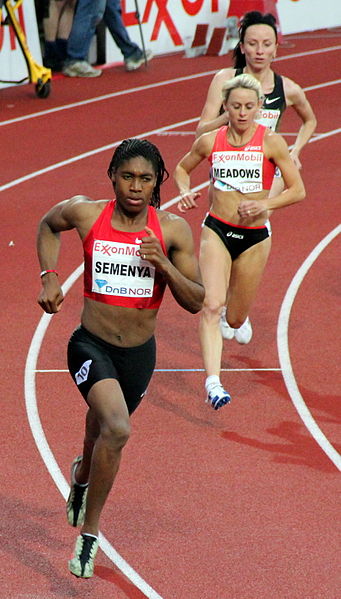The Tricky Case of Caster Semenya: How Sports and Science Classify Sex

Two years ago, at the 2009 World Championships, South African runner Caster Semenya won the gold medal in the women's 800-meter race. Her celebration didn't last long, however.
Citing Semenya's meteoric rise in the world standings, the competition's host, the International Association of Athletics Federations (IAAF), had tested her for performance-enhancing drugs in the weeks leading up to the championships. Controversially, it also subjected her to a sex verification test before the race — private information that was then publicly leaked just hours before her final race.
The results of the test were never revealed and, ultimately, she was allowed to run and, later, to keep her gold medal.
This weekend, as Semenya defends her title at the 2011 IAAF World Championships in Daegu, Korea, Life's Little Mysteries asks: How does the IAAF define sex, and does it line up with science?
The short answer: not even science clearly defines it.
According to Anne Fausto-Sterling, a professor of biology and gender at Brown University, there are multiple layers to sex, including genital, chromosomal and hormonal. While the layers for the majority of the population align with the categories that we consider male and female, 1 to 2 percent are not so easily described.
"There is no one right definition," added Fausto-Sterling. "You have to look at it developmentally and you have to understand that there are multiple layers to sex and sex determination. We don't normally see those multiple layers because they normally have given sort of the same message to the body. But there are cases where some layers get one message and others get another message."
Get the world’s most fascinating discoveries delivered straight to your inbox.
Name the layers
Here are some basics. Usually, a male has a penis and testes. Chromosomally, he is XY, and hormonally he produces more androgens, including testosterone. Females, on the other hand, typically have a vagina, uterus and ovaries, have XX chromosomes and produce more estrogen.
But, there are a number of conditions where the elements are jumbled. Consider Swyer syndrome, for example, in which a person who looks female on the outside has XY chromosomes and no functioning ovaries or testes. Or, congenital adrenal hyperplasia, which can push the adrenal glands to produce such high levels of androgens as to make a person with XX chromosomes and ovaries appear, from the outside, male.
And this is where scientists, and the IAAF, run into trouble: Which marker — external appearance, chromosomes or hormone levels — determines a person's sex?
Scientists and doctors have tried to draw the male/female line for centuries, said Alice Dreger, professor of clinical medical humanities and bioethics at Northwestern University's Feinberg School of Medicine, moving from genital identification to chromosomal testing, and more recently to hormonal testing. But, because the layers are so complicated, each test ultimately fails: "It falls apart all the time because as soon as you come up with a definition that seems satisfying, you find someone who doesn't fit that definition. Nature is too complicated for just two categories to be based on biology." [What If There Were More Than Two Sexes?]
Sex in sports
One reason why the IAAF scrutinizes sex is because high levels of androgens could give female athletes an edge, for example by helping build stronger muscles or faster reaction times. (Indeed, androgen-boosting drugs are often the root of failed performance-enhancing drug tests.)
So, how does the governing body define sex? Not very well, it turns out. The IAAF doesn't require a sex test (which they call gender testing, a misnomer because gender and sex are not interchangeable terms). But, according to the IAAF Policy on Gender Verification, if an athlete's sex is challenged — for example, by another competitor — they must undergo a barrage of tests by a medical team comprised of a "gynecologist, endocrinologist, psychologist, internal medicine specialist and expert on gender/transgender issues."
The IAAF is also working to set up new rules concerning natural hyperandrogenism in females, also known as high levels of androgens. These rules are expected to be hammered out in the coming months.
Despite the broad panel and potential new rules, Dreger said there are inconsistencies in the IAAF's policies. Women with androgen-producing tumors, for example, are allowed to compete in women's events despite the fact that they have elevated levels of the hormone.
And, why single out hormones in women at all: men who have higher-than-average levels of androgens, for example, are not disqualified from competing against other men, she said. Other biological advantages — height, for example — do not disqualify athletes from competition, Dreger added. Why should hormone levels?
Regardless of how the IAAF defines sex, though, Dreger said it should come up with clearer policies so that athletes know what they're getting into before they sign up to compete.
"Without a clear policy, people are entering into a system that's an 'I know it when I see it' kind of policy, and they're going to get caught over and over again in this problem where they are outed as sexually anomalous. And it can really ruin your life when that happens because of the attitudes that people have."
This story was provided by Life's Little Mysteries, a sister site to LiveScience. Follow Life's Little Mysteries on Twitter @llmysteries, then join us on Facebook.


